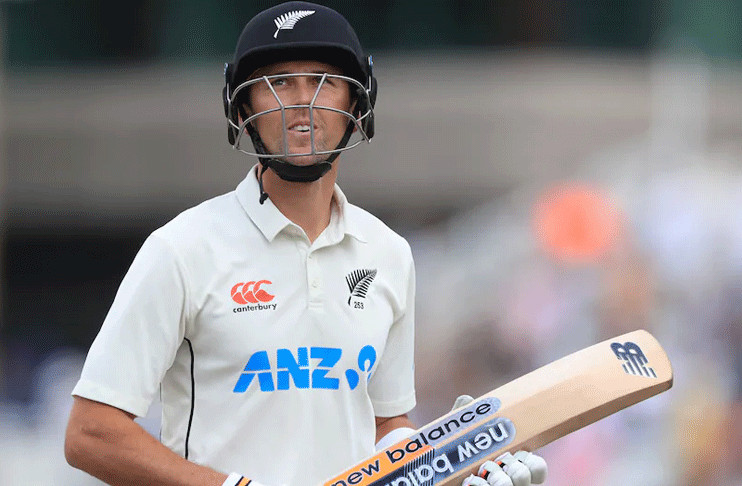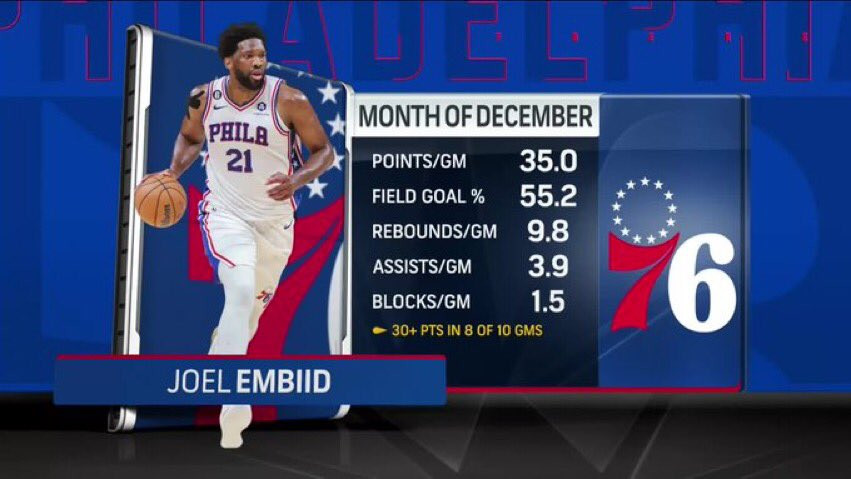Test cricket is considered the pinnacle of the sport we love the most, which is often seen as the most challenging and respected format of the game. It lasts five days, testing a player’s skill, patience, and mental strength. Unlike shorter formats, Test cricket requires players to adapt to different conditions and play with strategy and endurance. It’s where true cricketing talent shines, and where some of the greatest moments in the sport’s history have been made.
Test cricket truly tests the endurance and skill of players across all departments—fielders, bowlers, and especially batsmen. Unlike other aspects of the game, where players have opportunities to redeem themselves, batting is unique in its unforgiving nature. Fielders and bowlers can often recover from mistakes; a dropped catch or a couple of poor deliveries can be rectified later in the match.
However, in batting, a single poor shot or a moment of lapse can end your innings and, thus, your opportunity to contribute. In Test cricket, where patience and resilience are paramount, players must resist their instincts and maintain their focus over long periods. This level of persistence and skill required in Test cricket far exceeds what is needed in shorter formats of the game.
Despite the inherent challenges of Test cricket, there have been numerous instances where batsmen have excelled remarkably, demonstrating their ability to overcome these difficulties. In the rich history of Test cricket, spanning 147 years, there have been 165 occasions where a batsman has scored over 1000 runs in a calendar year.
More impressively, there are eight instances where players have surpassed 1500 runs within a single year. Notable performances include Mohammad Yousuf’s 1788 runs in 2006, Sir Vivian Richards’ 1710 runs in 1976, Joe Root’s 1708 runs in 2021, Graeme Smith’s 1656 runs in 2008, Michael Clarke’s 1595 runs in 2012, Sachin Tendulkar’s 1562 runs in 2010, and Ricky Ponting’s totals of 1544 and 1503 runs in 2005 and 2003, respectively.
The landscape of Test cricket began shifting around 2010 with the rise of T20 cricket, which attracted players with its lucrative contracts and shorter format. This transition saw a gradual decrease in the prominence of Test cricket, as players sought the financial and logistical benefits of T20 leagues. However, there remain cricketers who prioritize Test cricket, reflecting a deep-seated commitment to the format.
The Australian mindset, for example, has often emphasized the importance of Test cricket, as demonstrated by Mitchell Starc, who focused exclusively on Test cricket after a stellar debut season in 2014 in IPL for RCB and wouldn’t play for 10 more years to come.
Similarly, English cricketers have shown dedication to Test cricket by occasionally withdrawing from T20 leagues. A recent example is Ben Stokes, who opted out of the Chennai Super Kings squad this year to concentrate on Test cricket. This commitment underscores the ongoing respect and dedication towards Test cricket, despite the evolving dynamics of the game.
The rigorous demands of Test cricket are evident through the unwavering commitment and remarkable endurance required from players. Unlike other formats, Test cricket tests a player’s ability to remain consistently focused over long periods, demanding not just skill but immense mental and physical resilience.
This format provides no room for a second chance in a single match; a batsman must navigate through every delivery with precision, knowing that a single mistake can end their innings. This high level of perseverance makes Test cricket the ultimate test of a player’s ability and dedication.
In the face of such challenges, some players have distinguished themselves through extraordinary performances. The data underscores the feats of batsmen who have not only met but exceeded these rigorous demands.
As we discussed earlier, Test batting saw a paradigm shift in 2011, with batters starting to dominate and showing more aggressive intent. But who has been the most prolific batter in a calendar year since then? Are runs the only factor we should consider, or should the batting average also play a role?
Let’s see in first place the list of batters who scored 1000 runs in a calendar year individually. That will be our cutoff point. So a total of 44 batters managed to do so. Joe Root & Steven Smith are the only batters who managed to do it for 4 times, Kohli and Alistair Cook 3 times and David Warner, Kumar Sangakkara, Johnny Bairstow, Michael Clarke and Usman Khawaja were the only players who did it more than once.
While accumulating runs is important, it’s not entirely fair to compare Joe Root’s 29 innings in 2021 to, say, Kane Williamson’s 16 innings in 2015. More opportunities to play naturally lead to more chances to accumulate runs. So, how can we measure a batter’s performance in the context of the game?
To address this, we’ll consider the best calendar years since 2011 and analyze how individual batters performed compared to the average batter. We’ll check each year’s batting average and wicket rate to weigh a batter’s average and, in turn, their impact runs.
However, there’s a potential flaw in this approach. If we compare a batter’s average to the yearly average in Test cricket, it might not be entirely accurate. In Test cricket, a team has 10 wickets, with typically 7 full-fledged batters and 3 bowlers. Including bowlers’ averages in the yearly average could skew the results, making it a shallow metric to assess a player’s relative average or runs.
To avoid this, we’ll focus only on the top 7 batters in any given year where the batter in question scored more than 1,000 runs. The metric we’ll use is RAAR (Relative Average Against Average in Runs), which is calculated differently in Test cricket than in shorter formats. This approach should provide a more accurate measure of a batter’s impact in the context of the game.
These are all Year’s aggregates of Runs Scored and Wickets Down since 2000 for batting positions 1 to 7:
As we discussed the matrix we will be working on will be RAAR, Runs Above Average Replacement. It has two parts, one which captures the strike rate of the batsman and the second which captures the rate at which a batsman gets out. The first part is computed for batsmen as follows. Recall that in 2011, the average batsman scored 0.487 runs per ball. If a batsman scored 1000 runs in 1500 balls, he is scoring 1000 – 0.487 * 1500 runs above average, which is 269.
The second part is computed by looking at the rate at which the batsman gets out. In 2011, the average batsman made 0.0134 outs per ball. If the particular batsman we discussed above, in addition, made 10 outs in 1500 balls, then he made 0.0134 * 1500 – 10 outs less than the average player over 1500 balls, which is 10. The overall average of a Test batter in position 1-7 in 2011 was 36. So overall, he contributed 10 * 36 = 360 runs more than the average player, in terms of getting out. Taking the sum of both the parts, this particular batsman made 269 + 360= 629 runs above average.
Here is the list of all the computed numbers:
Michael Clarke’s performance in 2012 stands out as a remarkable achievement in Test cricket. That year, Clarke began with a spectacular triple century, scoring 329* against India—a feat he had never before accomplished. His consistency throughout the year was extraordinary, with scores of 18, 210, 37, 73, 6, 45, 15, 24, 25, 259*, 230, 38, 5, 44, 74, 57*, and 106.
The second most prolific batter according to our metrics is Joe Root from 2021. Despite England’s overall struggles, Root had a phenomenal year, amassing 1708 runs with a remarkable 802 runs above average. His performance was crucial for England, as he contributed over 30 percent of his team’s runs.
During this period, Root’s dominance was starkly evident; the second-highest run-scorer for England was Rory Burns with only 530 runs, marking a difference of 1178 runs between the top two scorers—a record in Test cricket for the largest gap between a team’s highest and second-highest run-scorer.
Similar dominance was observed globally; in 2021, no other player managed to score even 1000 runs while Joe Root amassed an exceptional 1708 runs. Rohit Sharma was the second-highest run-scorer that year with just 906 runs, creating a staggering gap of 802 runs between them which in turn is the record in Test Cricket too. This remarkable disparity underscores Root’s unparalleled performance and solidifies his place as one of the modern-day greats.
Root in 21’ started his year with a bang, scoring 228 runs against Sri Lanka in the second innings of the Galle test (1st for England). Then again in the next test which was played at Galle, he scored 186 again, One Match later when England toured India, Root started the series with 218 runs in the first innings of the Chennai test.
His series of scores were 228, 1, 186, 11, 218, 40, 6, 33, 17, 19, 5, 30, 42, 40, 4, 11, 64, 109, 180*, 33, 121, 21, 36, 0, 89, 62, 24, 50 and 28. Root faced around 3004 balls and was in control of 85 percent of them 2571 shots.
The third and fourth most prolific calendar years above average belong to Steve Smith, with exceptional performances in 2015 and 2017. In 2015, he scored over 728 runs above the average batter in a calendar year, and in 2017, he followed up with 696 runs above average.
In 2015, Smith began the year with a 117-run innings in the first innings of the Sydney Test against India, followed by another 71 in the second innings. During Australia’s tour of the West Indies in June that year, he scored 199 runs in the first innings of the Kingston Test and remained unbeaten with 54* in the second innings. However, his most remarkable performance that year came in the Ashes at the iconic Lord’s, where he scored a double century, 215 runs, in the first innings and added 58 in the second.
In 2017, Smith scored a total of 1,305 runs. He began the year with scores of 24 and 59 against Pakistan in Sydney. In February, during Australia’s tour of India for the Border-Gavaskar Trophy, his scores were 27, 109, 8, 28, 178*, 21, 111, and 17. Although India won the four-Test series 2-1, Smith’s performances were impressive.
In August, when Australia toured Bangladesh, Smith seemed off-colour, managing only 8, 37, 58, and 16. However, he saved his best for the Ashes that year. He started the series with a bang, scoring 141* in Brisbane. Although his bat was quiet in Adelaide, England couldn’t keep him down for long. In the very next Test match at Perth, Smith scored a monumental 239 runs. He followed this up with scores of 76 and 102* in the Boxing Day match, ending the year on a high note.
Next on the list of the most dominant years in Test cricket since 2011 is Kane Williamson’s 2015, during which he amassed 1,172 runs in just eight Test matches. Remarkably, he scored over 688 runs above the average batter that year. The average runs per wicket for the top seven batters in 2015 was 37.43, but Williamson scored at an impressive average of 90.15.
In November, when New Zealand toured Australia, Williamson began the tour with 140 runs in the first innings of the Brisbane Test, followed by 59 runs in the second innings. In the Perth Test, he continued his stellar form, scoring 166 runs in the first innings. However, he remained mostly quiet in the Adelaide Test.
Later that year, when Sri Lanka toured New Zealand again, Williamson scored 88 and 71 in the Dunedin Test. He capped off the year with an unbeaten 108* in the second innings of the Hamilton Test.
Sixth on the list of the greatest post-2011 Test batting calendar years is Kumar Sangakkara’s 2014. He scored 1,438 runs that year at an impressive average of 72. The average for the top seven batters in 2014 was 40.33, with an out-per-ball ratio of 0.0128. Sangakkara faced 2,608 balls that year and scored 633 runs above the average replacement.
Sangakkara started the year with scores of 26 and an unbeaten 9* against Pakistan in the Dubai Test, followed by 52 and 8 in the Sharjah Test. It was a modest beginning for the left-hander, but he reserved his best for Sri Lanka’s tour of Bangladesh. In the first Test at Mirpur, he scored 75 in the first innings, and in the second Test at Chattogram, he notched up his career’s first triple-century, scoring 319 in the first innings.
He didn’t stop there, adding another 105 in the second innings, bringing his tally to 424 runs in a single Test match. Sangakkara became only the second batter to achieve the feat of scoring a triple century and a century in the same Test, following Graham Gooch’s innings at Lord’s against India in 1990.
After these back-to-back centuries, Sri Lanka toured England. In the first Test at Lord’s, Sangakkara made 147, scoring his third consecutive Test century, and added 61 in the second innings. In the second Test at Leeds, he scored 79 in the first innings and 55 in the second, helping Sri Lanka win the match and secure the series after a draw at Lord’s. This tour is still regarded as one of Sri Lanka’s best outings in SENA countries, where they managed to win both the ODI and Test series.
Following this, Sri Lanka hosted South Africa for a two-match series. In the first Test at Galle, Sangakkara scored 24 and 76, and in Colombo, he made 0 and 72, ending the series on a positive note, although Sri Lanka lost the series 1-0.
Sangakkara continued his great run of form against his favourite opponent, Pakistan, when they toured Sri Lanka in August. He scored 221 in the first innings of the Galle Test and followed it with 21 in the second innings. In the next match at Colombo (SSC), he scored 22 and 59, helping Sri Lanka win both matches and clinch the series.
Sangakkara then travelled with Sri Lanka to New Zealand, where in the first Test at Christchurch on December 26, he scored just 6 and 1 as Sri Lanka lost the match.
Overall, it was a phenomenal 12 months for Sangakkara. He not only scored 1,438 runs in Test cricket but also ended his international calendar year with eight centuries and 2,868 runs, which still stands as a record for the most runs in an international calendar year.
Next on the list is Virat Kohli’s epic run in the years 2016, 2017, and 2018. These were truly remarkable years for him across all formats—Tests, ODIs, T20Is, and even the IPL. However, as our primary focus is on Test cricket and, more specifically, on his performance relative to an average batter replacement, we will delve into his numbers in the longest format of the game.
In 2016, Kohli compiled 1,215 runs, facing 2,011 balls at an average of 76. During that year, the average batter in the top seven positions struggled, managing only an average of 37. Kohli’s nearly double average speaks volumes about his dominance. He scored three double-centuries that year, and he didn’t stop there—he scored three more double-centuries in 2017, which ranks 12th on our list. His 2018 performance is ranked 10th among the best calendar years when considering the relative average of top-seven batting positions.
In 2017, he added 1,059 runs, and in 2018, he amassed 1,322 runs. The average for the top-seven batters in 2016, 2017, and 2018 were 37.73, 35.98, and 31.46, respectively. In contrast, Kohli’s batting averages in those years were 76, 75, and 55.
In 2016, his sequence of scores was as follows: 200, 44, 3, 4 (against West Indies in North Sound, Kingston, and Gros Islet); 9, 18, 9, 45, 211, 17 (against New Zealand in Kanpur, Eden Gardens, and Indore); 40, 49*, 167, 81, 62, 6*, 235, and 15 (against England in Rajkot, Visakhapatnam, Mohali, Wankhede, and Chennai). He scored 1080 runs out of his total tally in winning matches rest were scored in Drawn Test matches. He added 610 runs above the average replacement batter that year and scored 2,595 runs in international cricket, the 11th most in the all-time record list for most runs in a calendar year. (see full list here).
In 2017, his scores were as follows: 204, 38 (against Bangladesh in Hyderabad); 0, 13, 12, 15, 6 (against Australia in Pune, Bengaluru, and Ranchi); 3, 103*, 13, 42 (against Sri Lanka in Galle, Colombo, and Pallekele); 0, 104*, 213, 243, 50 (against Sri Lanka at Eden Gardens, Nagpur, and Delhi). Out of 1059 runs 643 came in winning cause, 403 in Drawn matches and 13 in Lost test matches. This year, he added more than 557 runs above the average of a top-seven batting position player and scored 2,818 runs in international cricket, the third most, just behind Kumar Sangakkara and Ricky Ponting. (see full list here).
In 2018, Kohli added around 569 runs above the average replacement. His scores were: 5, 28, 153, 5, 54, 41 (against South Africa in Cape Town, Centurion, and Johannesburg); 149, 51, 23, 17, 97, 103, 46, 58, 49, 0 (against England in Birmingham, Lord’s, Nottingham, Southampton, and The Oval); 139, 45 (against West Indies in Rajkot and Hyderabad); 3, 34, 123, 17, 82, and 0 (against Australia in Adelaide, Perth, and Melbourne). Out of his 1322 runs, he scored 598 in won matches and 734 in lost ones. He scored 569 runs above average that year and finished with 2,735 international runs, the fourth highest, following his 2017 tally.
Virat Kohli’s peak years in all cricket formats were undoubtedly 2016, 2017, and 2018, marking an era of unparalleled dominance in the cricketing world.
At 9th position on the list of the most impactful runs in a calendar year is Adam Voges’ 2015. He scored a total of 1,028 runs at an impressive average of 86 while facing 1,742 balls. The average for top-seven batters that year was 37.43, and Voges was dismissed 12 times less than an average top-seven position batter on the same number of balls faced. Out of his 1,028 runs, 581 were above the average, securing him the 9th spot on our list.
Voges began the year with an unbeaten 130 in Roseau against the West Indies, followed by 37 runs in Kingston, contributing to Australia’s series win. However, his performance in the July Ashes series in England was disappointing, where he managed scores of 31 and 1 in Cardiff, 25 at Lord’s, 16 and 0 in Birmingham, 1 and 51* in Nottingham, and 76 at The Oval.
Despite the poor Ashes series, Voges didn’t lose hope. When New Zealand toured Australia in November, he regained form by scoring 83* and 1* in Brisbane, 41 and 119 in Perth, and finishing the series with 13 and 28 in Adelaide. His most remarkable performance of the year came in December when the West Indies toured Australia. In the first Test match at Hobart, he stunned the West Indian bowlers with an unbeaten 269, followed by another not-out century of 106* in Melbourne, ending the year on a high note.
At the 11th position on our list of the most impactful calendar years is none other than the modern-day great, Babar Azam’s 2022. In this year, Babar amassed 1,184 runs at an impressive average of 70, facing 2,155 balls. The average top-seven position batter in 2022 played with an average of 37 per innings. Babar was dismissed 14 times fewer than an average batter on the same number of balls faced, leading to a total tally of 561 runs above average.
Babar began the year with a score of 36 runs in Rawalpindi against Australia, followed by another 36 and an extraordinary 196 in Karachi, which is widely regarded as his best-ever knock. He wrapped up the series with scores of 67 and 55 in Lahore.
In July, during Pakistan’s tour of Sri Lanka, Babar continued his fine form by scoring 119 and 55 in the first Test in Galle, and concluded the tour with scores of 16 and 81. In December, when England visited Pakistan, Babar added 136 runs in Rawalpindi, 75 in Multan, and finished the series with scores of 78 and 54 in Karachi.
Babar capped off the year with a magnificent 161 and a 14 against New Zealand in the Karachi Test, ending 2022 on a high note.
These batters have consistently outperformed their peers, topping the batting charts in a calendar year far beyond the average batter. Steven Smith & Virat Kohli’s three appearances on this list highlight their remarkable cricketing prowess in Test match cricket. The inclusion of Joe Root, Kane Williamson, and Babar Azam speaks to their extraordinary talent and impact in the longest format of the game.
Among the current cricketers who are still active, the top 13 positions are dominated by the “Fab 5,” a testament to their dominance and why they are held in such high regard in international cricket. Their consistent performances set them apart, solidifying their status as modern-day greats.
Other remarkable mentions here are Angelo Mathews’ great run in 2014 where he scored 1160 runs and scored 557 runs above average. Hashim Amla’s 2012 where he scored 1064 & 533 runs above average. Cheteshwar Pujara’s 2017, where he scored 1140 runs out of which 531 were above average. Johnny Bairstows’s 2016 when he scored 1470 runs and 525 was above average. Brendon McCullum’s 2014, where he scored 1164 runs with a triple century of 302 against India. He scored 520 runs above average and is at the 18th spot.
Author: Zain @zainalysis


















